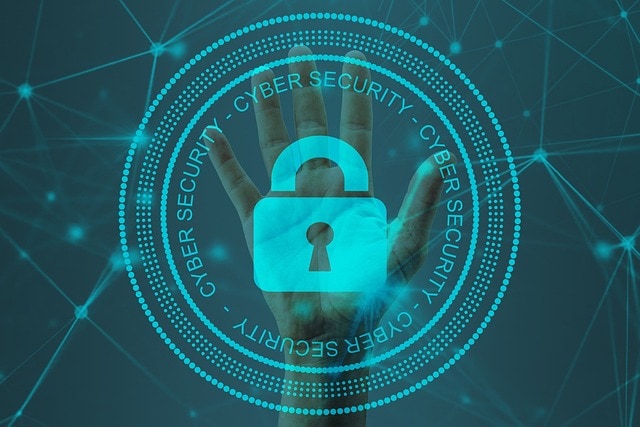Cybersecurity should be a top priority for businesses of all sizes, especially small and medium-sized businesses (SMBs). While large corporations often have dedicated cybersecurity teams and large defense systems, SMBs can also take proactive steps to protect their valuable data and operations from cyberthreats.
Read on as we explore actionable strategies that you can use to safeguard your business against cyberattacks and minimize risks.
Common Cybersecurity Threats Affecting Businesses
The best place to start when dealing with cyberthreats is to become aware of which cybersecurity threats tend to be the most common for businesses. This is because cybercriminals see businesses as particularly susceptible to such cyberattacks, and can use the same attack on multiple businesses to gain valuable information.
The most common types of cyberthreats that SMBs face include the following:
Phishing Attacks
At this point, any business that knows about cybersecurity knows about phishing attacks. This is because they have become so widely used due to their effectiveness against businesses. Phishing involves fraudulent attempts to obtain sensitive information, such as passwords or financial data, by posing as a trustworthy entity in electronic communication. These attacks often come in the form of deceptive emails or messages.
Ransomware
Ransomware is a type of malware that encrypts files on a victim’s system, making them inaccessible until a ransom is paid. SMBs are frequent targets of ransomware attacks due to potentially weaker cybersecurity defenses compared to larger enterprises.
Data Breaches
Data breaches occur when unauthorized individuals gain access to confidential data, such as customer information or intellectual property. Breaches can result in financial losses, reputational damage, and legal consequences for SMBs.
Insider Threats
We don’t often like to think of the threats coming from inside our business, but they often can. Insider threats involve employees or insiders intentionally or unintentionally compromising company data or systems. This could be due to negligence, malicious intent, or inadequate security protocols.
How to Protect Your Business Against Cyber Threats
Now that we know what we need to defend our businesses against, let’s look into some great cybersecurity strategies that can be used to safeguard your business:
Secure Your Network
Start by securing your network infrastructure. Use firewalls, antivirus software, and intrusion detection systems to monitor and block unauthorized access attempts. Regularly update and patch software to address vulnerabilities as well. Constantly receiving notifications of new updates to your software might seem annoying at first, but it shows that the business that made the software is actively fixing any issues or vulnerabilities in their product.
The sooner you get your systems updated, the safer your business will stay. You’d be amazed at how often cybercriminals exploit a vulnerability they see is covered in a recent patch or update—that is why notes on updates and patches are often kept vague so that cybercriminals aren’t given insight into what can be used on those who have yet to update their systems.
Implement Strong Authentication
Everyone knows that a strong password is far better than “Password123”, but you can take your authentication game to a whole new level with authentication methods such as multi-factor authentication (MFA). By adding this additional step, it becomes that much more complicated for cybercriminals to access your sensitive systems or data. Encourage a culture of security by having your employees update their passwords monthly.
Train Your Employees
Educate your employees about cybersecurity best practices. This can be done by conducting regular cybersecurity awareness training sessions on identifying phishing attempts, using secure passwords, and recognizing suspicious activities. Let your employees become a part of your security processes and create a stronger security culture in your business.
Backup Your Data
Regularly back up your critical data to secure locations, both on-premises and in the cloud. This way, in the event of a ransomware attack or data breach, you have a recent backup that lets you recover the information your business needs to resume functionality with little downtime and without having to pay a ransom or suffer permanent data loss.
Monitor and Respond
Implement monitoring tools to detect unusual network activity or security breaches promptly. Develop and test an incident response plan to outline steps for responding to cyber incidents effectively. This includes isolating affected systems, notifying stakeholders, and collaborating with cybersecurity experts if necessary. In this day and age, it’s not a question of if an attack might happen, but when—and incident response plans that function properly let your business bounce back with ease. Make certain to keep the incident response plan updated as well; cyberthreats are constantly changing, so your plan to combat them also should
Stay Updated on Threats
In a similar vein, keep yourself abreast of the latest cybersecurity threats and trends. It’s one thing to be aware of one type of cyberthreat and how it’s done, but when a new one comes along, how will you combat it? So, how do you make sure you know the newest threats? Simply follow industry news, subscribe to cybersecurity newsletters, and participate in forums or webinars to stay informed about evolving cyber risks and mitigation strategies.
Another great way to stay on top of the latest cyberthreats is to create a security community in like-minded businesses or businesses that you work often with. Share stories and instances that you’ve seen with each other in an open forum; that way, you keep all of your businesses safe and secure and also create a better working relationship.
The Benefits of Effective Cybersecurity for Businesses
When it comes to what your business can gain from having these cybersecurity practices in place, consider the following:
- Protecting Confidential Data: Safeguarding customer data, financial information, and intellectual property from unauthorized access or theft.
- Maintaining Business Continuity: Minimizing disruptions to business operations caused by cyber incidents, ensuring continuity and resilience.
- Preserving Reputation: Building trust with customers, partners, and stakeholders by demonstrating a commitment to cybersecurity and data protection.
- Compliance with Regulations: Meeting regulatory requirements and industry standards related to data security and privacy, avoiding penalties or legal consequences.
- Cost Savings: Preventing financial losses associated with cyberattacks, such as ransom payments, data recovery costs, and potential litigation expenses.
If you’re looking for IT or cybersecurity services to help your business, no matter what size it is, CMIT Solutions of Northern Shenandoah Valley can help. Contact us today and get your business the safety and security it deserves so you can focus on doing what you do best—running your business!





